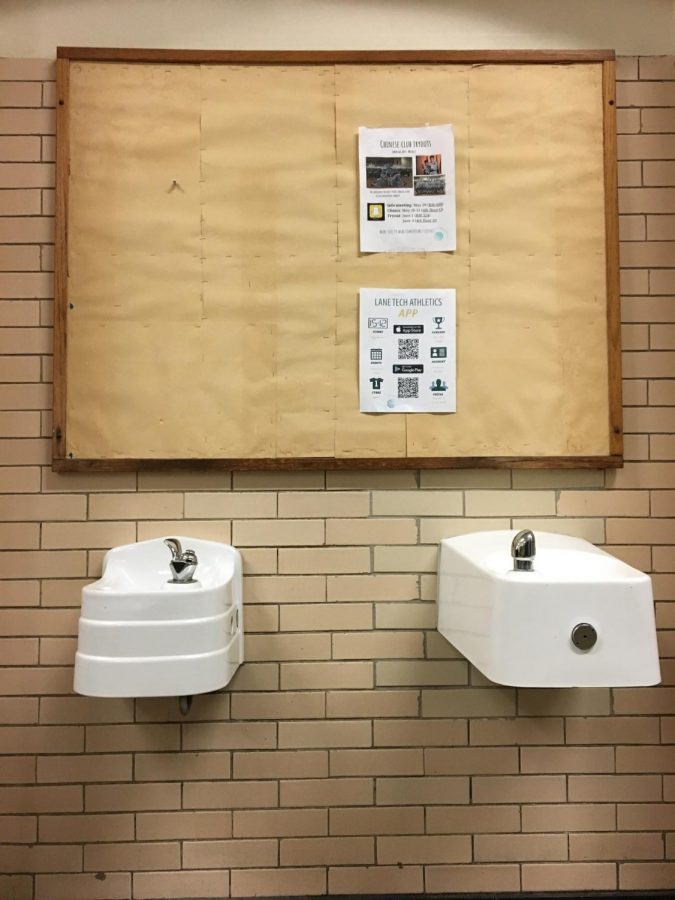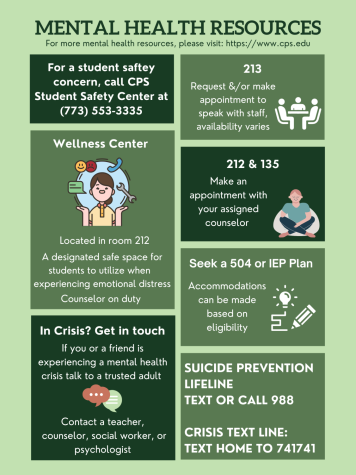Thirsty? Think again.
Many older, white fountains such as these are currently not in use as newer silver fountains with water bottle filling stations are implemented.
June 7, 2018
Even seniors can still remember the gasping feeling of completing one of Coach Marchan’s two-mile runs or Pacer tests. The only thing that can seem to help is a gulp of cool water to extinguish that burning feeling. However, in light of recent news, one cannot help but to ask—how safe is the water students all drink from the fountains?
According to a Chicago Tribune report from April, nearly 70 percent of around 3,000 homes tested in Chicago contained traceable amounts of potentially brain-damaging lead in their tap water. About a month after the Tribune report, a WBEZ article revealed that the Chicago Park District shut off nearly half of its outdoor drinking fountains due to lead concerns. A list of every park’s fountains and the recorded results were included in the article as well.
The city of Chicago required the use of lead servicing lines between major streets and homes until it was banned by Congress in 1986, according to the Chicago Tribune. However, many lead service lines are still in the ground as the city’s plumbing code states that property owners themselves have the responsibility of replacing pipes at their own expense.
Lead exposure particularly affects children the most, making the quality of water in schools a growing concern for the Chicago community. Children are most sensitive to lead exposure due to their developing brains and nervous systems. Even with relatively low lead exposure, children can experience symptoms of hyperactivity, lowered IQ, learning disabilities and more, according to the EPA.
In adults, symptoms typically manifest as high blood pressure, headaches, memory/concentration difficulty and mood disorders.
Journalist and Lane alum Monica Eng has investigated Chicago water quality concerns for WBEZ multiple times in the past. The results she discovered, particularly in schools with young children, were concerning.
According to DNAinfo and the Chicago Tribune, CPS school Blair Early Childhood Center for disabled students aged 3-6 contained one classroom sink that tested lead levels of over 1,100 parts per billion. The EPA suggests that schools take action if lead testing shows results exceeding 15 parts per billion.
According to online records from CPS, all CPS schools were last tested for lead in 2016. In October 2016, CPS released the reported levels at numerous schools, including Lane. Lane’s highest level at the time was 11 parts per billion, which is below the action level recommended by the EPA.
Many from the Lane administration do not know the school’s current situation concerning water quality. Numerous fountains across the Lane campus are not in use, leaving students to navigate to newer silver fountains installed with special water bottle filling stations.
It is not clear if the fountains were turned off intentionally or if they are simply out of order. The community, however, remains in the dark on updates concerning water conditions. Principal Tennison said he is continuing to follow the investigation with high interest.
Many remain uninformed of possible lead threats to health as attention usually tends to gather after big news stories break after months of investigation and research. While crises such as the one in Flint, Michigan inspire positive nationwide checkups and testing, the pressures remain off until another threat emerges.
In the meantime, there are methods of avoiding lead buildup in pipes that don’t cost thousands of dollars of expensive plumbing work, according to Eng.
Flushing protocols remain “one of the most effective ways to flush out any lead that settles over these dormant periods overnight, on weekends and on holidays,” according to Eng. However, CPS has not mandated such procedures, Eng said.
As of 2016, Lane’s lead levels have been recorded as safely under the EPA action limit. However, lead pipes still remain in the ground in Chicago and the threat of lead poisoning still lurks throughout the city. Older buildings are more prone to having higher levels, according to the EPA.
Until updated records regarding Chicago’s lead levels emerge, it remains up to citizens to stay aware of possible threats. Any Chicago resident may call 311 and request a free water quality test kit, following the steps on chicagowaterquality.org.







